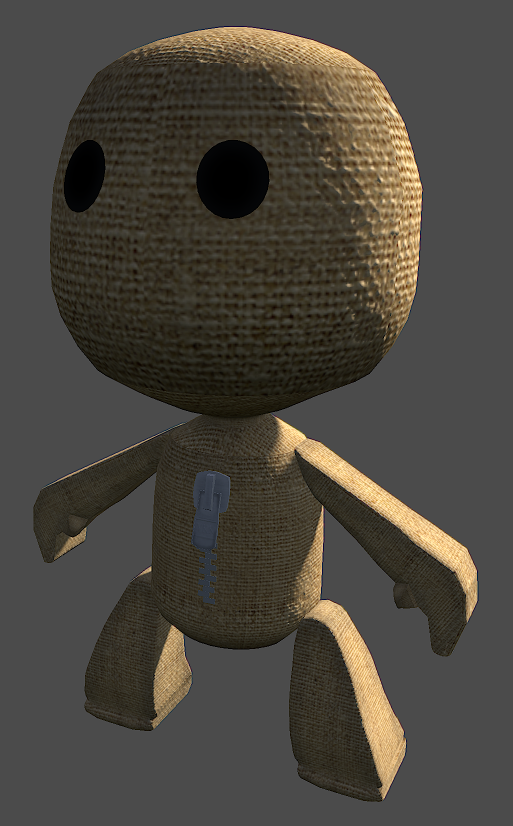My model will contain three different types of maps. The first being a Diffuse, second is Specular and the third and final map is a Normal.
The reason why I have chosen to use these three maps on my model is because, well, they are the more common types of maps available; there are other popular maps such as Bump, Alpha channel, Opacity, Reflection and Refraction.
I have chosen to use a Diffuse because, obviously, without it the character would have no colour or design. The Specular map allows me to create a more realistic feel to the character as I can control how light bounces off of the character in certain ways on certain areas. The Normal will, again, allow me to push the realistic feel and imagery of the character further, by using a Normal map, I can create the illusion that the sack weave is actually a weave and doesn't just look like a flat image. It also allows me to create engravings in the metal on the zip of the character.
Diffuse Maps:
These are the two Diffuse maps I created for the character (check UV post for why there is two). I wanted to go for a lighter colored weave for my characters fabric, rather than the more traditional and popular dark brown. I didn't want the character to look completely clean, because nothing in the real world is perfect (in the sense of undamaged). By creating the dark areas around where the stitching would be on each section it shows that a lot of strain goes on these areas as this is where the coloration of the character is rubbing and fading away.
I wanted to keep the eyes a traditional black, this is because nearly all sack boys have these types of eyes; to push the eyes further and bring more life into them then refer to the specular maps.
Specular Maps:
These are my two Specular maps for my character. The specular maps look fairly simple in design, however once lighting is incorporated into the scene with my character, I feel that this map will bring out and help to develop some of the details of the character.
When a light is directed at a sack weave, the cloth that the sack has been weaved in is relatively reflective, not in the sense that you can see your reflection or it will blind you if you look at it but you can the beams of light across the strands. By manipulating the levels of black and white I was able to pull back the inside sections and make the weaves whiter; this will create a realistic effect of the fabric I am trying to replicate with the character.
Normal Maps:
These are my two Normal maps for my modeled character. The main reason why I wanted to use a Normal map on my character is because it will help me to push the detail in the sack weave. By manipulating the layout before converting it into a Normal map, it allows me to bring forward the individual weave strands and push back the ares between the strands. This creates the illusion that there is depth and perspective to the textures, rather there just being a flat texture placed over a model.
To finish up the details I added and engraving on the character's zip. It's fairly simple in design, with there being a few lines and the letter 'YKK'. YKK is a zip brand that is seen on a lot of zips. When you look at the Diffuse map, you won't see the 'YKK' there; this is because I wanted to create the engraving illusion so therefore no extra colours go onto this section but as light passes over the zip section you will see the engravings.













.jpg)
.jpg)











